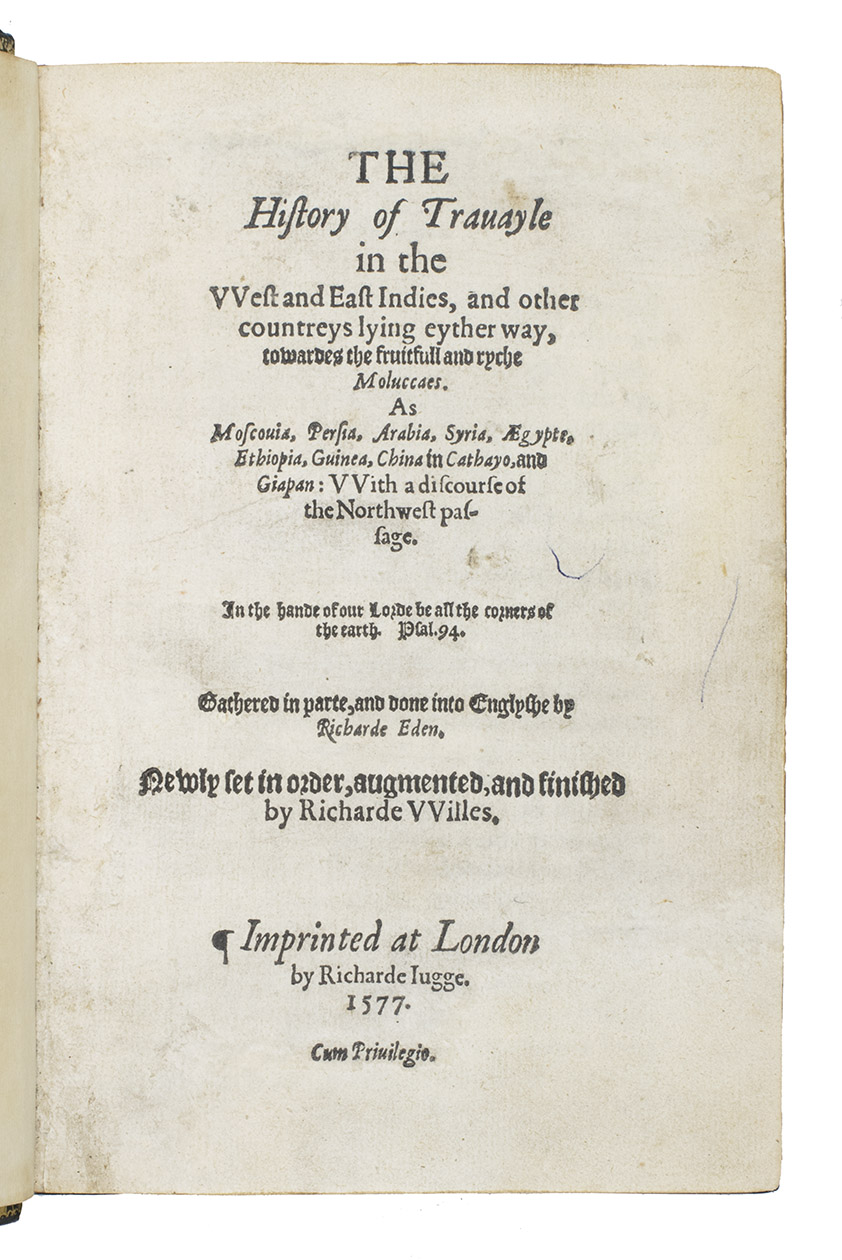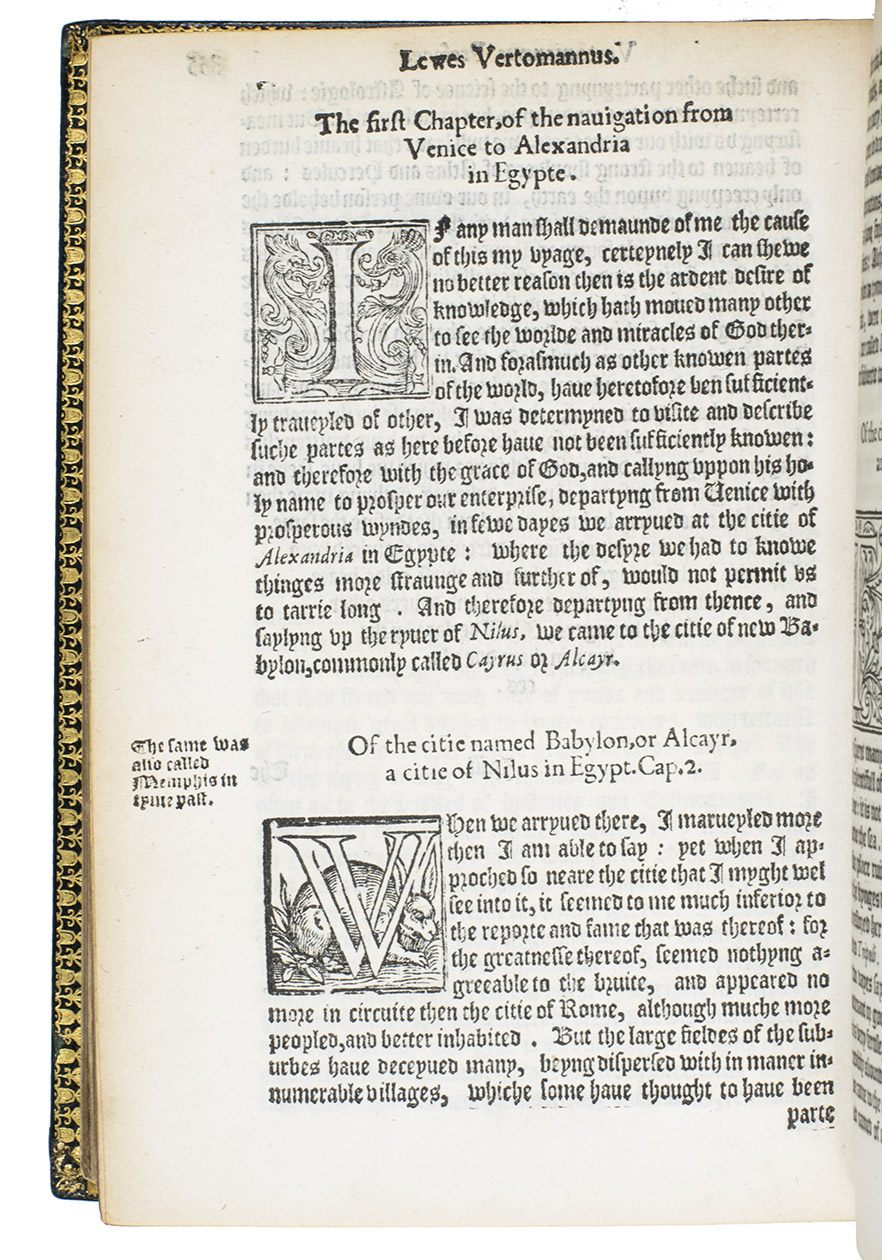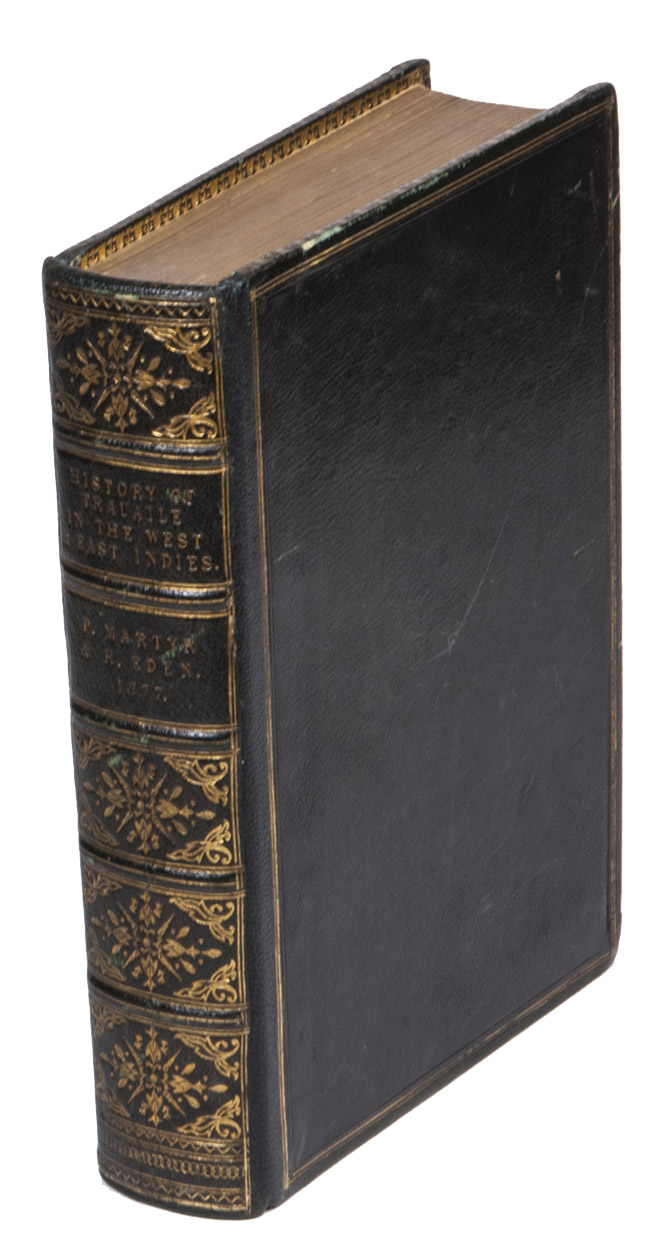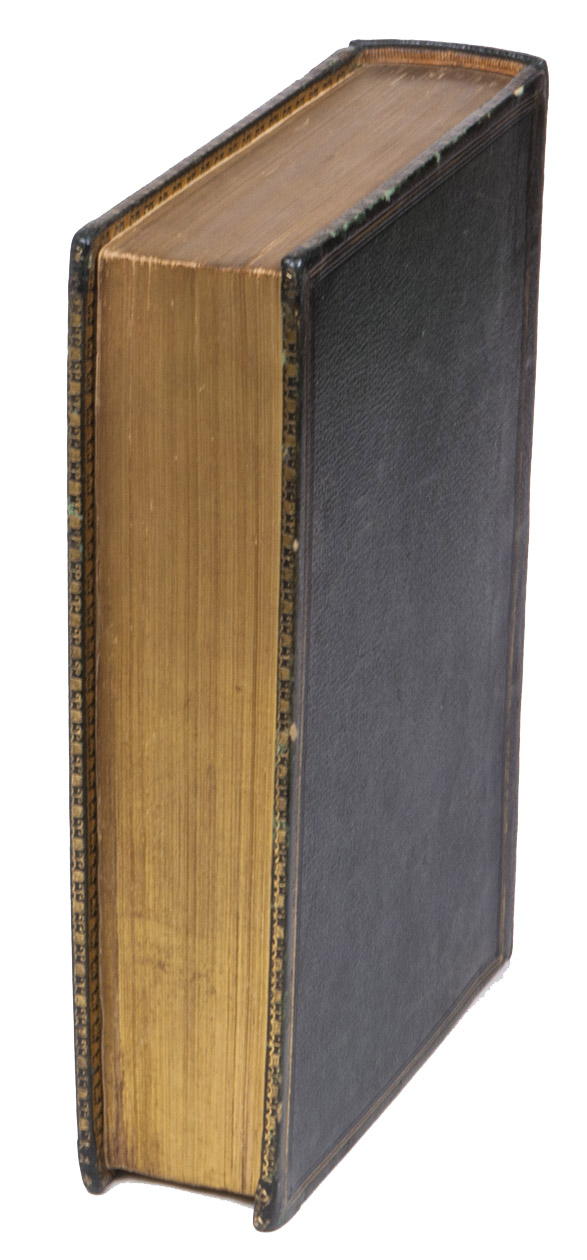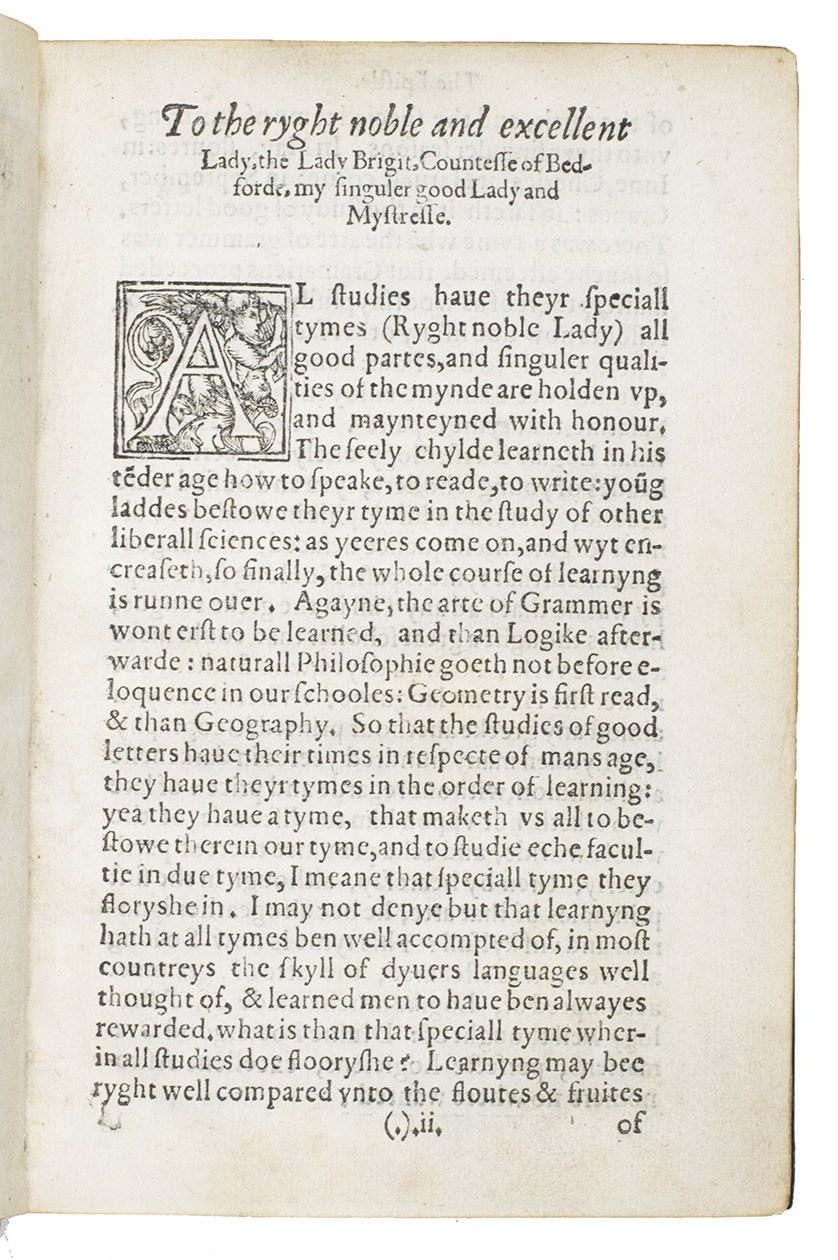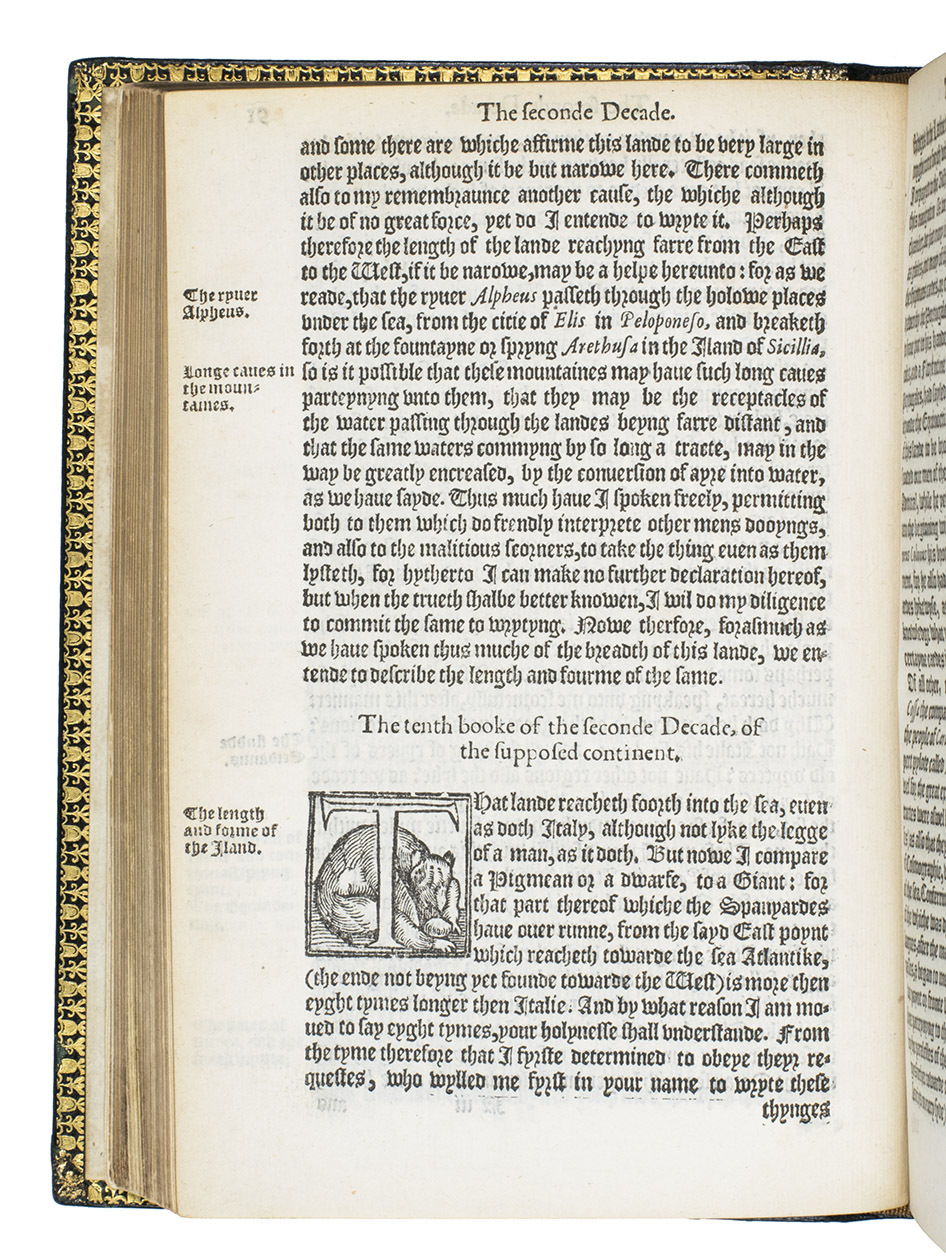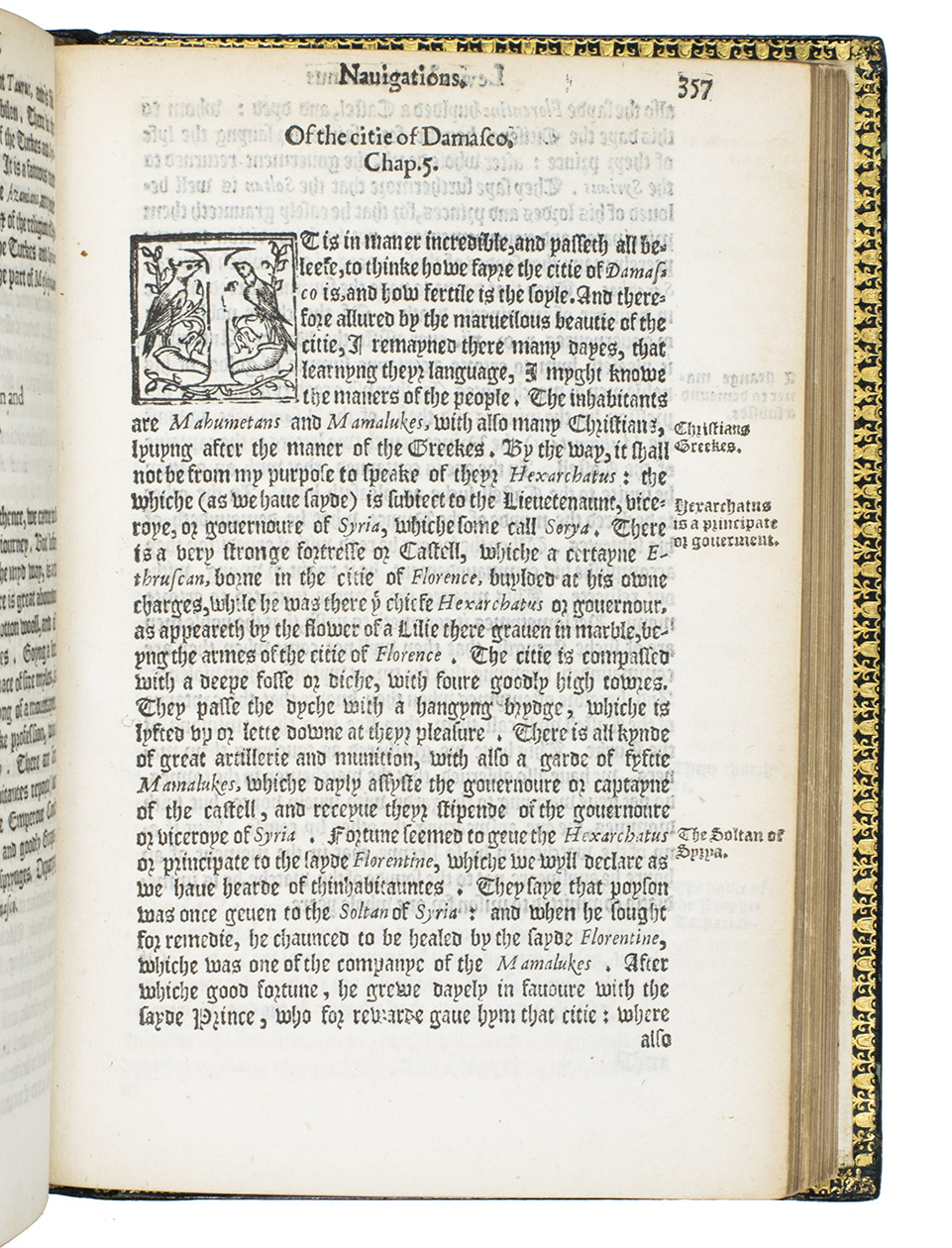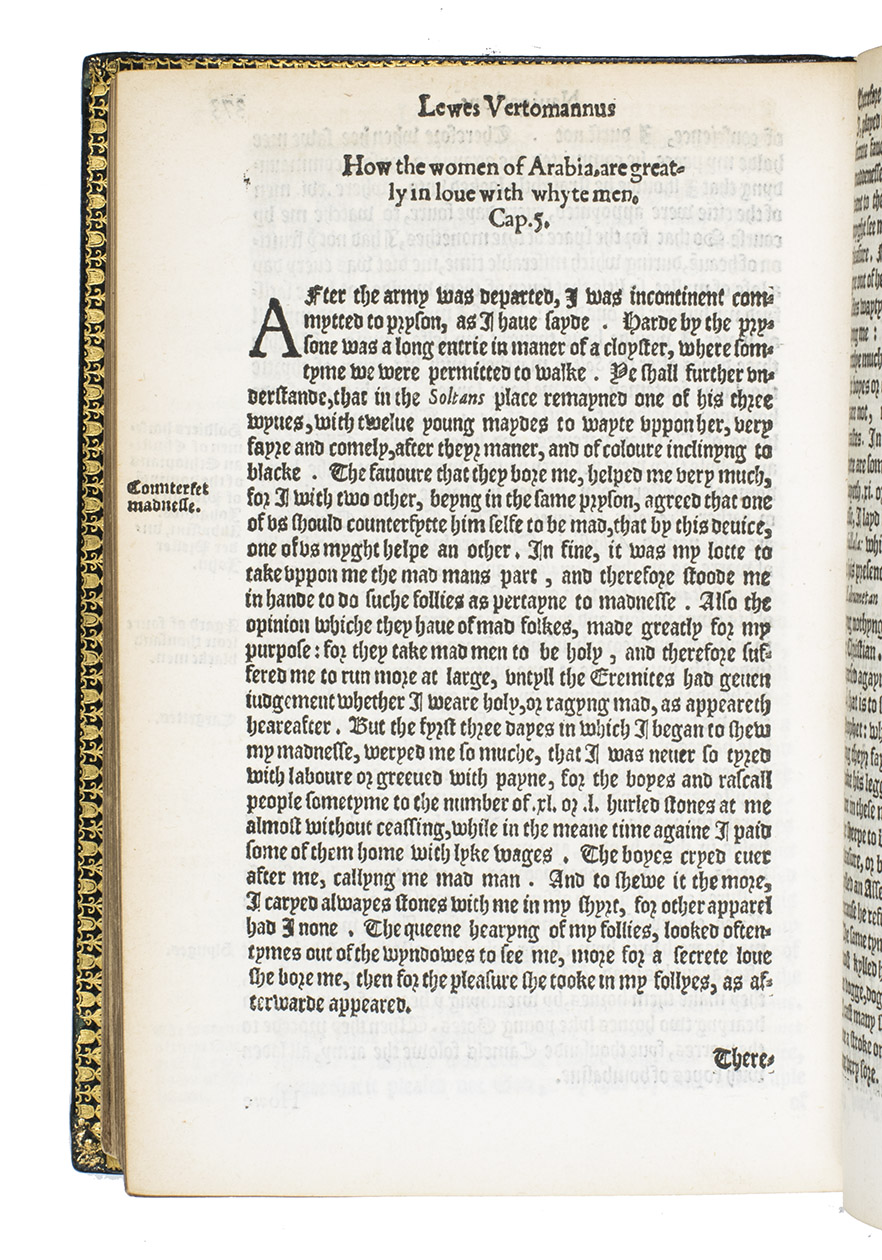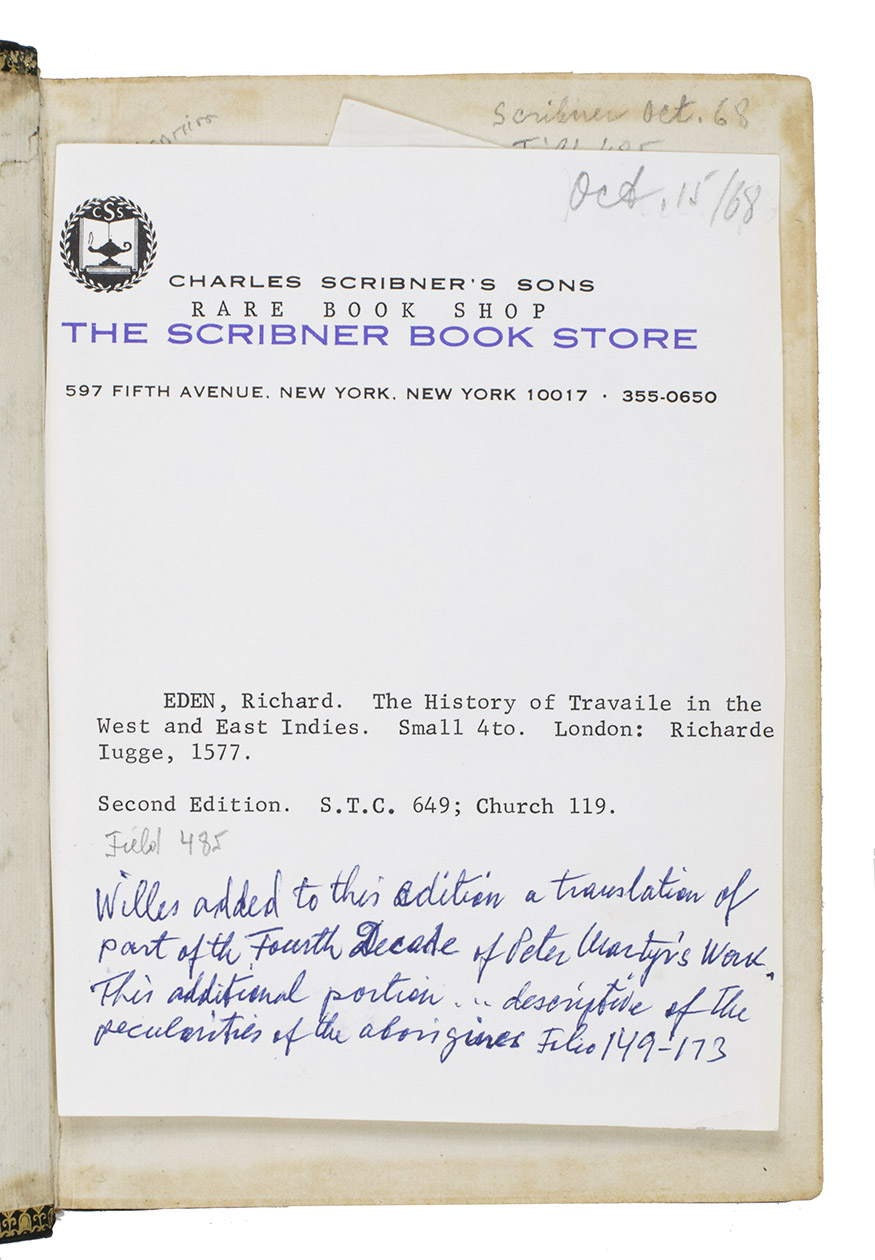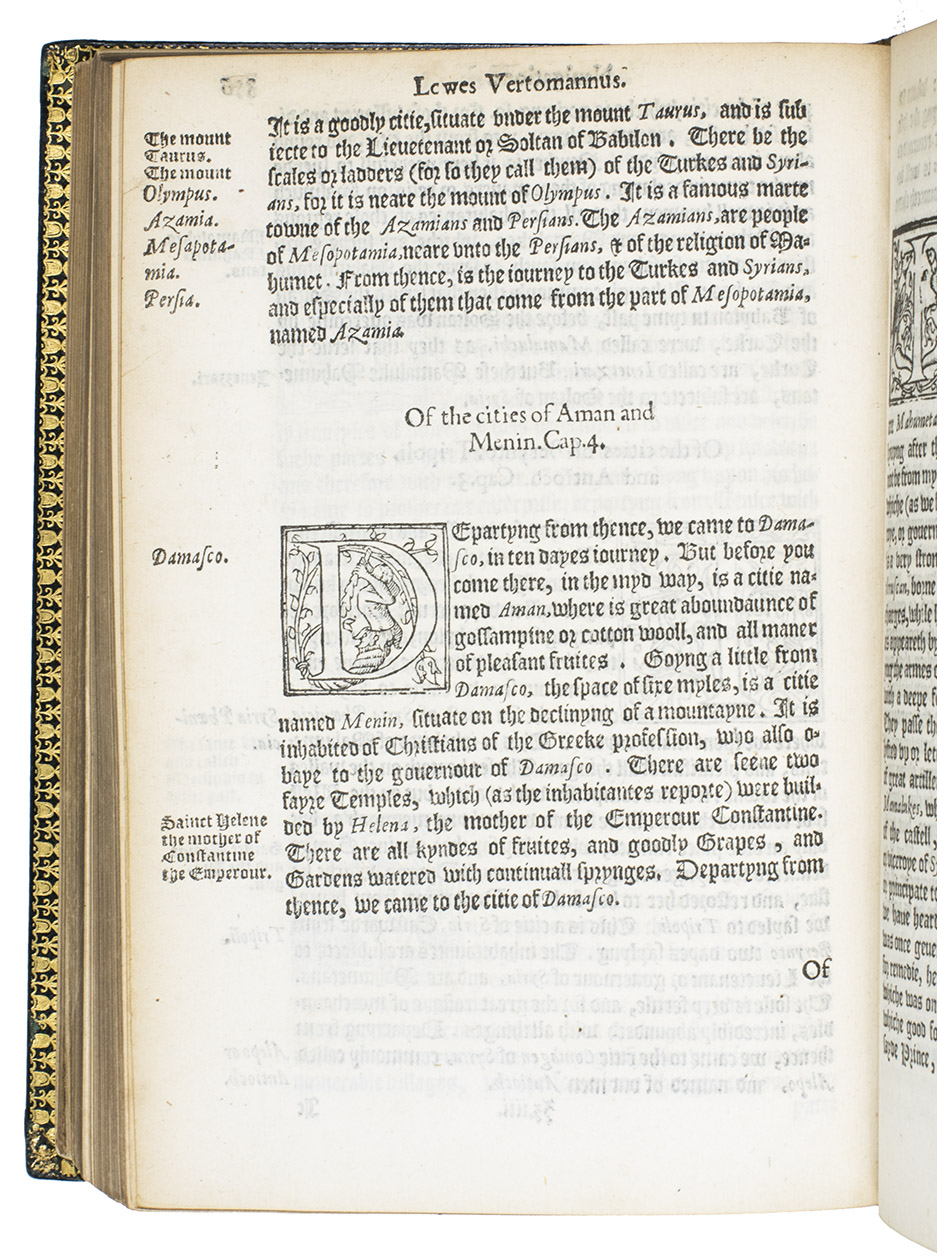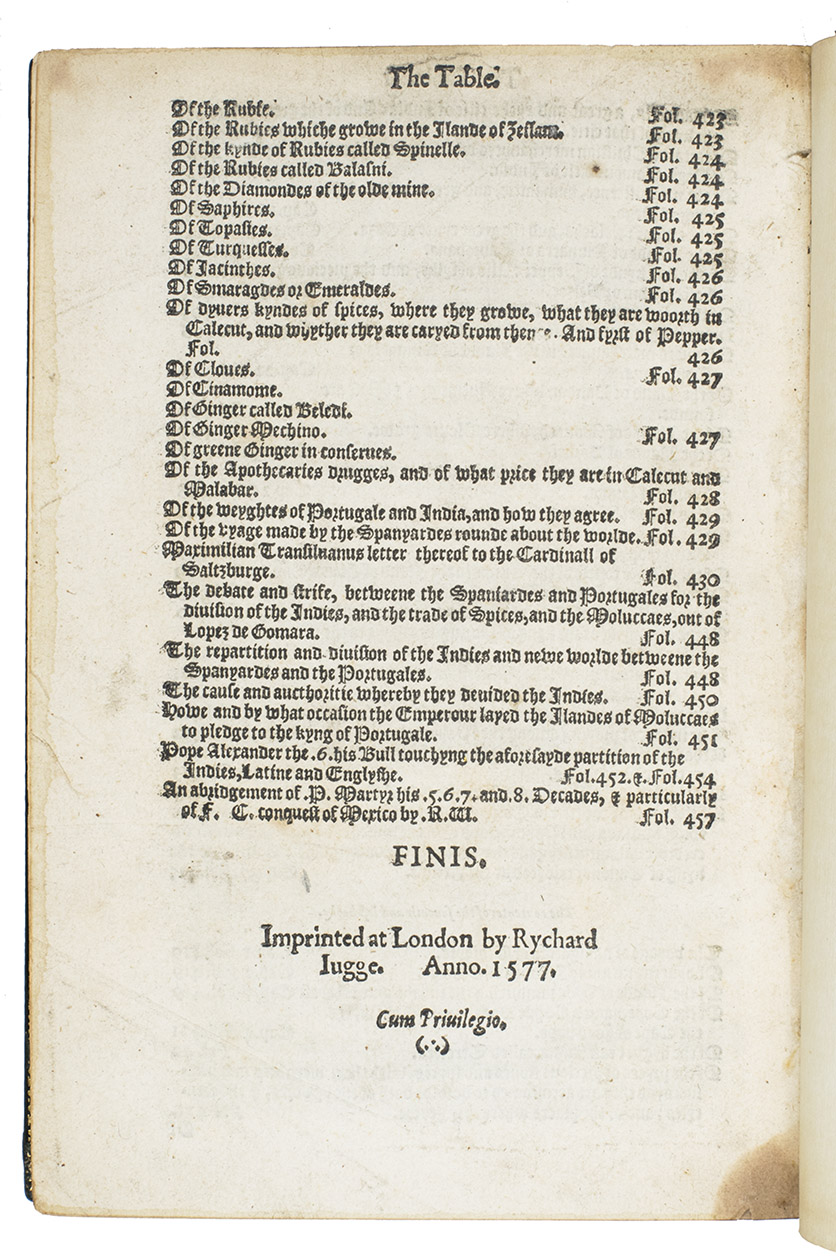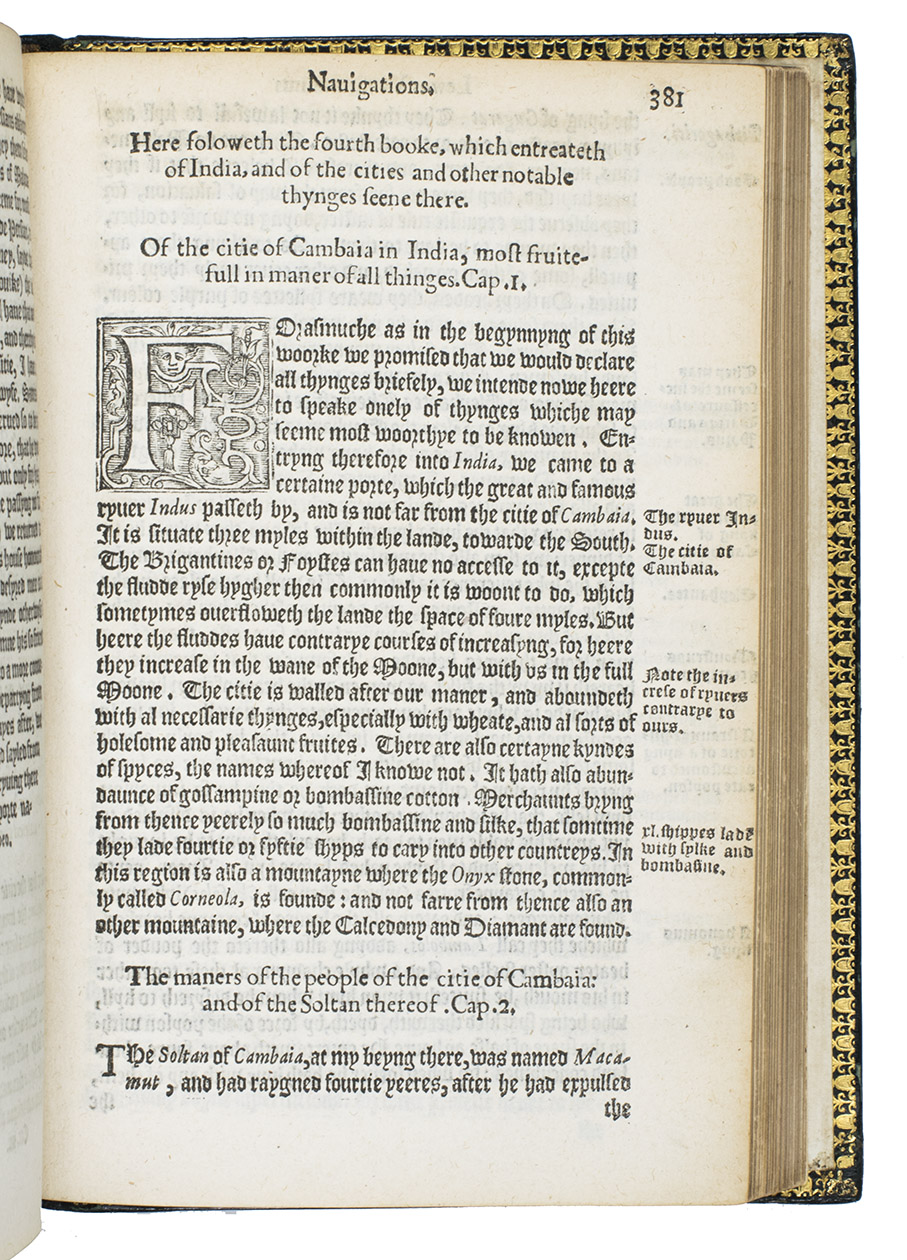VARTHEMA, Ludivico di.
The Navigation and v[o]yages of Lewes Vertomannus, Gentelman of the citie of Rome, to the regions of Arabia, Egypte, Persia, Syria, Ethiopia, and East India, both within and without the ryver of Ganges, etc. In the yeere of our Lorde 1503. Conteynyng many notable and straunge thinges, both hystoricall and naturall. Translated out of Latine into Engylshe, by Richarde Eden.
London, Richard Jugge, 1577. 4to. With historiated woodcut initials. Splendid modern full navy blue morocco, bands on spine with title showing faded gilt, covers double-ruled gilt. [10], 466, [6] ll.
€ 265,000
The first English edition of Ludovico di Varthemas famous account of his travels to Arabia, Persia and India: a highly important and adventurous narrative, first published in Italian as Itinerario ... nello Egypto, nella Suria nella Arabia deserta & felice ... in 1510, here published in English with other accounts of travels in exotic lands. All of the early Italian editions of Varthema's Itinerario, separately published, are extremely rare. Varthema, a gentleman adventurer and soldier from Bologna, left Venice at the end of 1502 for the Middle East. Impressed and fascinated, he describes not only rites and rituals, but also social, geographical, and day-to-day details. "I determined, personally, and with my own eyes", he declares in the prefatory dedication, "to ascertain the situation of places, the qualities of peoples ... of Egypt, Syria, Arabia Deserta and Felix, Persia, India, and Ethiopia, remembering well that the testimony of one eye-witness is worth more than ten hear-says.". In 1503 he reached Alexandria, proceeded on an extensive tour of southwest Arabia and sailed from Ormuz to India. There he travelled along the entire coast of India from north to south and up to Bengal, passing the coasts of Malabar and Coromandel. He made stops at Cambay (Khambhat), Chaul, Dabul (Dabhol), Goa, Bijapur, Calicut (Kozhikode), Cochin (Kochi), Mangalore and many further places, even journeying inland into the Vijayanagara Empire: he is one of the first Europeans to describe the Hindu caste system and religion. He purports to have made extensive travels further east, around the Malay peninsula and the Moluccas. Whether this is true remains under debate. His next section about India however is certainly from his own experience. He returned to the great city of Calicut in August 1505, describing it in more detail than any other place in his account. There he took employment as a soldier and trader with the Portuguese and played a key role in the war with the Zamorin of Calicut. The Zamorin planned a naval attack on the Portuguese at Cannanore (Kannur) and when Varthema found out he decided to escape Calicut and inform the viceroy Francisco de Almeida (1450-1510) in Cochin. As a result the Portuguese were victorious in the naval battle with the Zamorin, which Varthema describes at length. Almeida awarded him a knighthood and took him into service in India, where he stayed for a year and a half. He left in 1508 and made his way back to Europe via the Cape of Good Hope.
Varthemas account of his travels became a bestseller immediately on its publication in 1510 and was translated into Spanish and Latin before the present publication in English. "Varthema brought into European literature an appreciation of the areas east of India ... which it had previously not received from the sea-travelers and which confirmed by firsthand observations many of the statements made earlier by Marco Polo and the writers of antiquity" (Lach, I. i. 166). "Varthema was a real traveller. His reports on the social and political conditions of the various lands he visited are reliable as being gathered from personal contact with places and peoples. His account of the overland trade is of great value in that we are made to see it before it had begun to give way to the all-seas route. He even heard of a southern continent and of a region of intense cold and very short days, being the first European probably after Marco Polo to bring back the rumor of Terra Australis" (Cox I, 260).
No separately published English edition of Varthemas extremely important account of his travels appeared until 1863, but it appears for the first time as pp. 354-421 of the present History of travayle in the West and East Indies, one of the first English editions of the significant collection originally compiled by Pietro Martire dAnghiera (Peter Martyr, 1457-1526). The first translation of Martire (1555) covers only decades I-III of his De orbe novo, with some omissions, with additions from other sources, edited and translated by Richard Eden. Under the benefaction of the Earl of Bedford, Richard Willes, a member of the Jesuit Society from 1565 to 1572, expanded Edens translation for the present edition, including, apart from Varthemas travels, decades I-IV and an abridgement of decades V-VIII of Martire; Frobishers voyage in search of a Northwest Passage; Sebastian Cabots voyages to the Arctic for the Moscovy Company; Cortezs conquest of Mexico; Pereiras description of China, 1565; Acosta and Maffeis notices of Japan, 1573; and the first two English voyages to West Africa. It is also the first account in English of Magellans circumnavigation, as well as the first printed work to advocate the establishment of a British colony in North America.
Provenance: Acquired from Quaritch in 1975 by Gregory S. Javitch (1898-1980), a Russian-born, Canadian leader in the land reclamation sector in Ontario. Javitch formed an important collection of 2500 items that he called "Peoples of the New World", encompassing both North and South America, which was acquired by the Bruce Peel Special Collections at the University of Alberta. It was considered the finest such private collection in Canada at the time and formed the cornerstone of the librarys special collections. The present volume remained in Javitchs private collection and was acquired directly from his heirs.
Washed (but not aggressively and not pressed), minor repairs to the title-page (not affecting the text), retaining some slight discolouration and small stains in a few leaves. Otherwise in very good condition and with large margins. Howgego M65. Brunet I, 294. OCLC 5296745. LCCN 02-7743. Alden, European Americana 577/2. Church 119. Streeter Sale 24. Arents 23. Borba de Moraes, p. 33. Hill 533. BM-STC 649. Sabin 1562. Cordier, Japonica 71. Field 485. Not in the Atabey or Blackmer collections.
Related Subjects:
